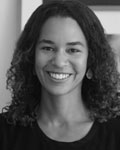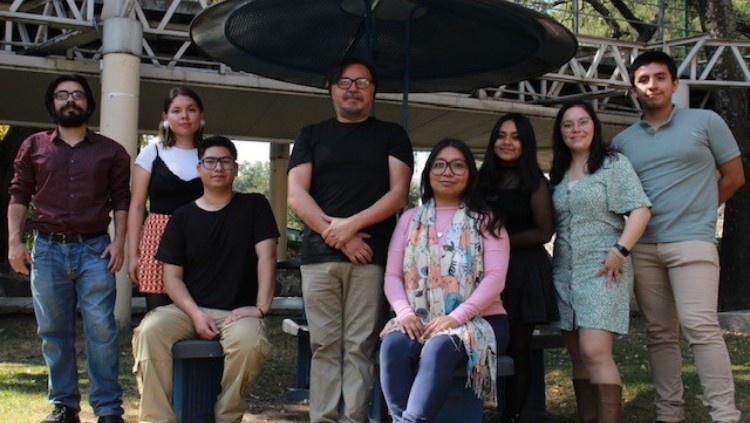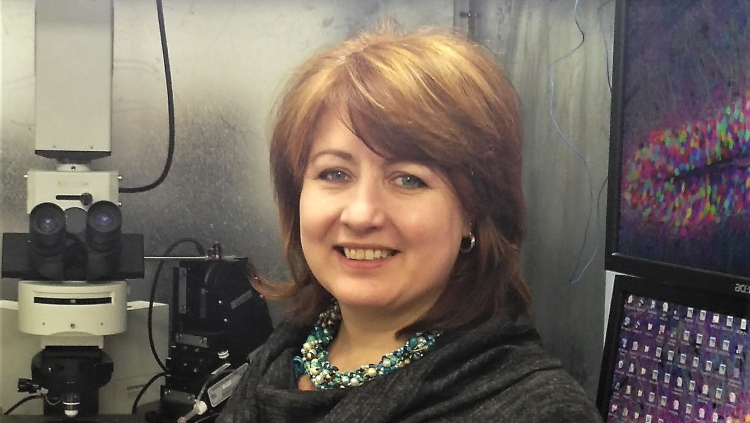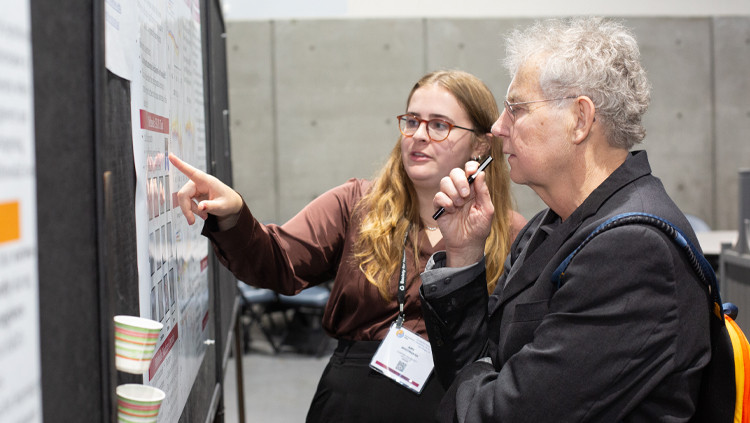
This resource was featured in the NeuroJobs Career Center. Visit today to search the world’s largest source of neuroscience opportunities.
Catherine Hartley is an assistant professor of psychology and neural science at New York University (NYU), and a researcher within NYU’s Institute for the Study of Decision-Making. Her research focuses on the neuroscience of learning and decision-making and how these processes change over the course of development. She works at the intersection of cognitive neuroscience and developmental psychology, drawing heavily upon perspectives and approaches from disciplines such as behavioral economics and computer science. To accompany SfN’s webcast, Training at the Intersection of Neuroscience and Other Disciplines, Hartley shared her experience with and perspectives on interdisciplinary research.
What first sparked your curiosity about interdisciplinary neuroscience, and how did your interest impact your training and career?
I was drawn towards psychology in high school and was specifically interested in understanding how brain systems give rise to cognitive phenomena.
At Stanford, my undergraduate major was symbolic systems, an interdisciplinary cognitive science program with coursework in philosophy of mind and language, psychology, computer science, and linguistics. In many ways, this interdisciplinary foundation is appropriate for a number of lines of inquiry. I focused on neuroscience, but from an early stage in my training I held the perspective that neuroscience is inherently interdisciplinary and methods and approaches from other disciplines can be incorporated to study how the brain works.
Following my time at Stanford and before graduate school, I spent six years in industry working on computer programming and software architecture projects in the field of artificial intelligence. As in neuroscience, this work demanded strong quantitative skills.
I did my PhD in psychology at New York University followed by a postdoc at Weill Cornell Medical College, where I then became a faculty member in the psychiatry department. Although I was in a clinical environment, I did basic research aimed at understanding how learning or decision-making processes can be used to understand the mechanisms that underlie psychopathology.
Ultimately, I think that some of the most interesting questions lie at the intersection of disciplines. In reality, there aren't actual boundaries — while the questions asked and training processes and research methods used are often different, there are usually complementary underlying perspective across those disciplines.
What is it like to run an interdisciplinary lab in terms of the people you bring in and how you’re able to span different fields?
My lab is relatively young, but my trainees have come from different academic backgrounds. Some may have a strong foundation in developmental psychology but are relatively new to neuroscience approaches, while others may have training in cognitive neuroscience but have no experience using computational methods.
In some ways, this can be beneficial to establishing a lab because their different strengths are complementary. And, as students and postdocs interact, they share their knowledge and expertise with others in the lab.
In terms of our research, many of our lines of inquiry rely on interdisciplinary approaches. We use computational models of learning to better understand how people evaluate and respond to cues that predict positive or negative events. The simplest decision-making tasks draw directly from models developed within behavioral economics and examine choices between two alternatives that may differ in value, or other relevant dimensions.
One of the best ways to enter into interdisciplinary research is to collaborate with a researcher that has particular expertise in a complementary discipline. When I began using computational modeling approaches, I worked with collaborators who had strength in that area. Or, for instance, a neuroscientist who is interested in using behavioral economic models may find it helpful to partner with an economist in an adjacent department who has relevant expertise and interests.
Through collaboration, you can begin to acquire knowledge of a new discipline and incorporate that growing expertise into your own lab.
What skills and practices helped you as a trainee focused on interdisciplinary neuroscience research that you also recommend to others?
Just about anyone training in neuroscience needs to have some foundation in computer programming. Having strong mathematical skills also helps. Math instruction can often be quite abstract, which can hinder the ability to see its potential application. For me, math came alive and felt more tangible during my graduate training when I actively applied it in my research.
Beyond specific methods or skills, it's very important to read broadly — at the periphery or even outside of your discipline. The perspectives and approaches from those fields can give you new insights into your work.
Personally, some of my more creative observations and inspirations have come from reading other disciplines — everything from behavioral ecology to artificial intelligence. While these topics are outside of my area of expertise, they still have bearing on my research.
It can also be valuable to go to conferences that are slightly outside of your discipline.
How do you see the evolving nature of interdisciplinary neuroscience impacting training programs?
In the current landscape, interdisciplinary boundaries are dissolving, with new fields such as computational psychiatry, social neuroscience, or neuroeconomics bridging basic neuroscience research and areas of medicine, computer science, or social sciences.
All of these cases are interesting because they pose a training challenge. Universities have a departmental structure that provides the curriculum and mentorship arrangements for an individual to focus on a given discipline. However, it's going to be important for universities to create mechanisms for these boundaries to become more porous so that a student who is training in neuroscience can access other departments to employ different approaches or find additional mentors.
At NYU, for example, we have an interdisciplinary Center for Data Science that has jointly appointed faculty across departments. I encourage my students to take advantage of courses offered through the center. For example, if they want to employ machine learning approaches in our research, they can take courses that go beyond what might be offered within the psychology department where our lab is based.
In addition to updated institutional structures, there also needs to be funding mechanisms that support research that straddles these disciplinary boundaries.
Is there anything else that trainees and faculty should consider when approaching interdisciplinary research?
As you move toward interdisciplinary research, there may be some areas of the work in which you’ll have deep knowledge, and some areas where you may feel like a novice — that's okay. The latter is when having collaborators and going to different conferences is critical to further develop nascent areas of your research and help you gain a new body of knowledge.
It’s important to be tolerant and comfortable with stepping into domains where you're no longer an expert and to challenge yourself to learn a new perspective or approach. Don’t let the feeling of going out of your comfort zone be a barrier to exploring new directions in your research.
Watch SfN’s webcast, Training at the Intersection of Neuroscience and Other Disciplines, on-demand.
Speaker






